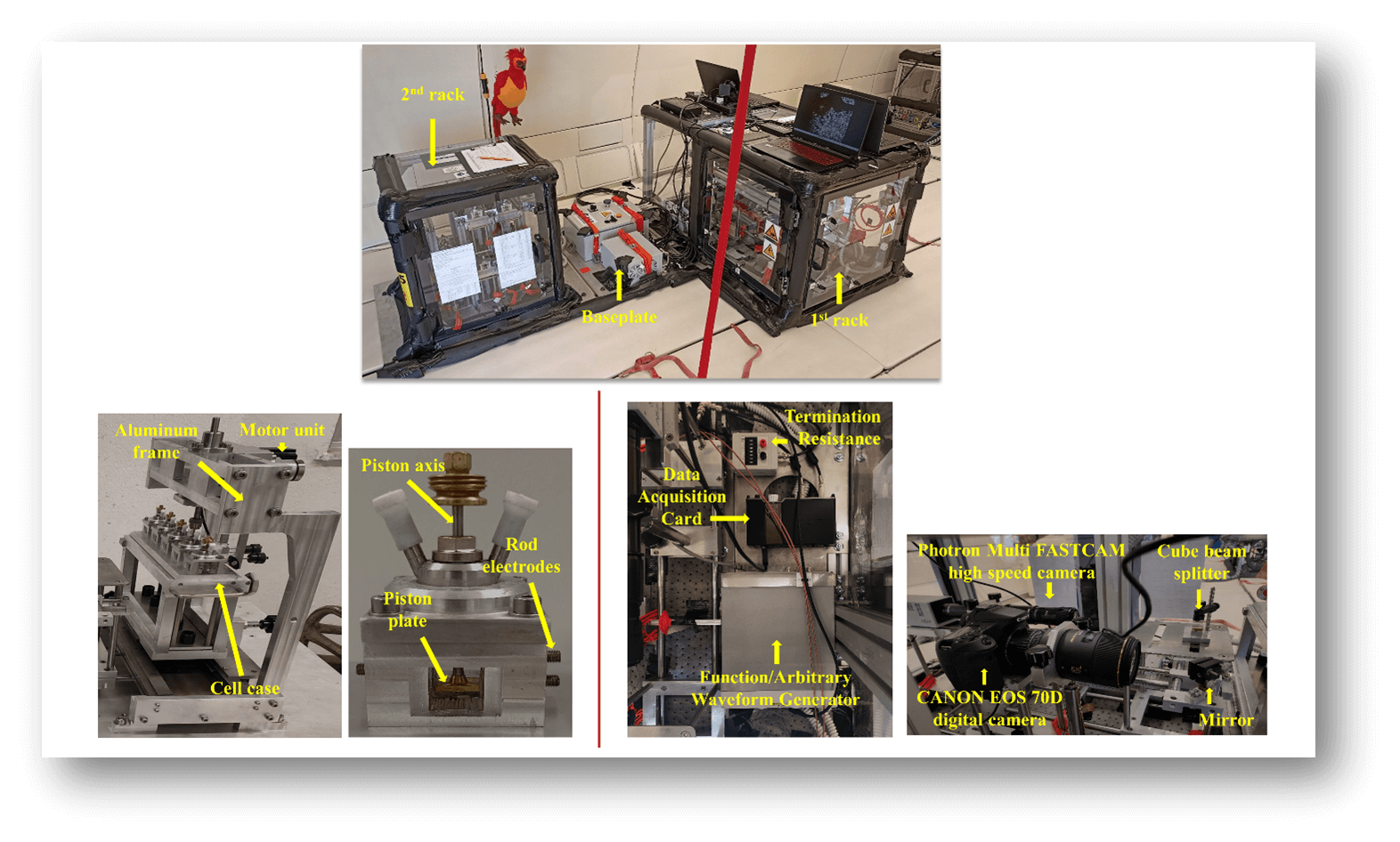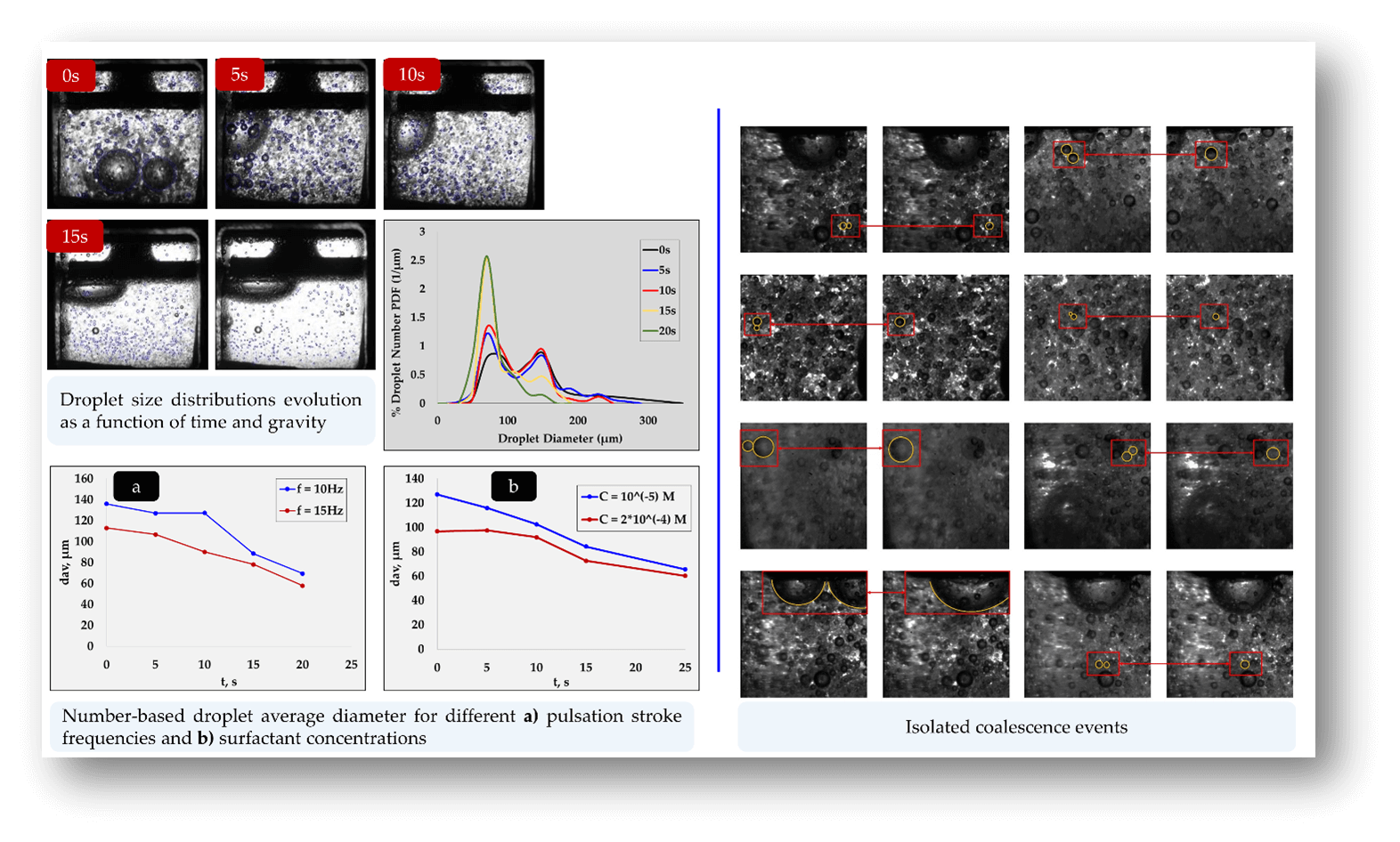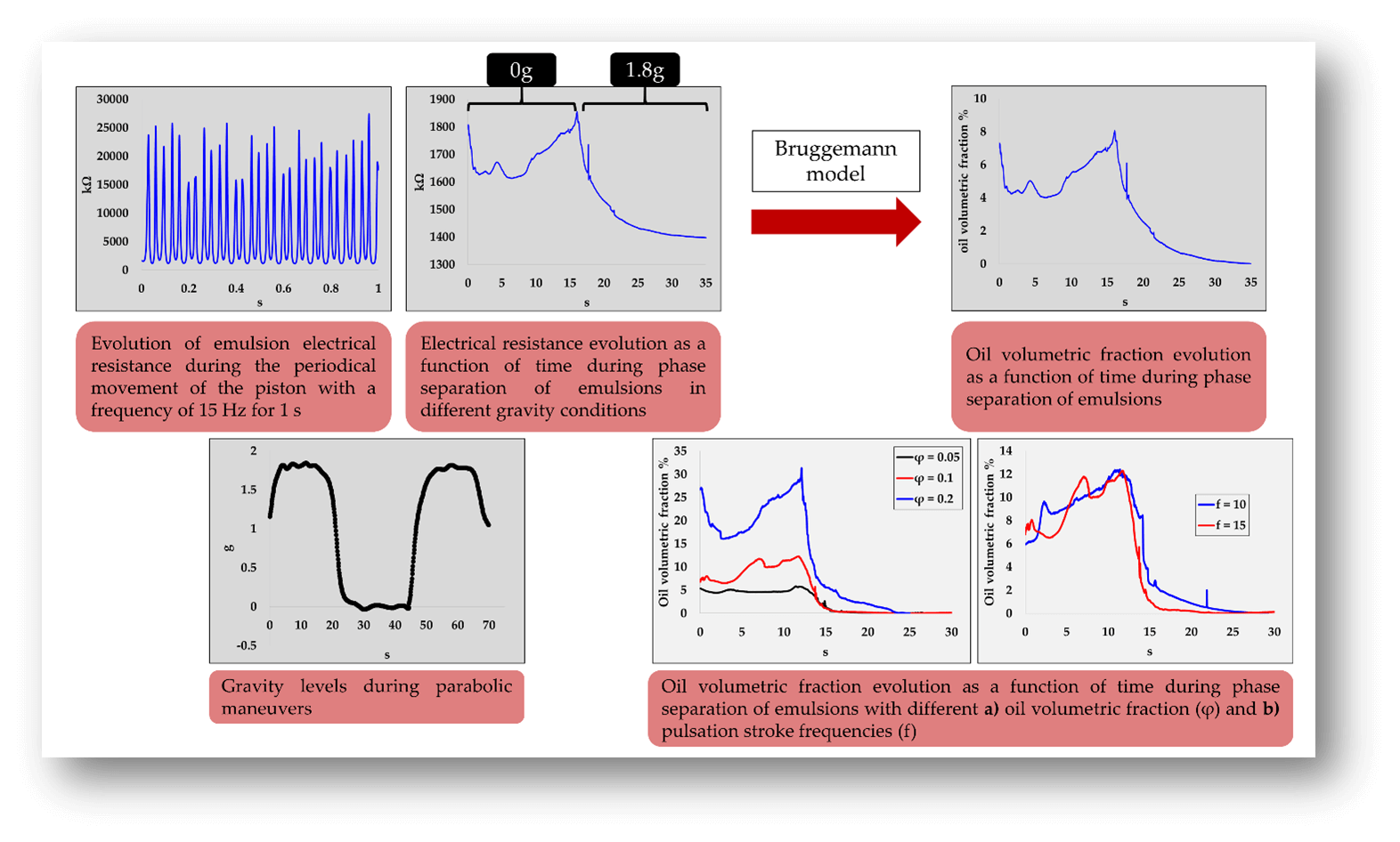Contact Person: Angeliki Chondrou aggeliki1811@gmail.com;
Emulsions are encountered in foods (i.e. mayonnaise, salad creams and deserts), cosmetics (i.e. hand creams, lotions and hair sprays) and pharmaceuticals. They are also involved in almost every step of oil industry, from crude oil extraction to the final combustion of fuels in cars and thermoelectric plants. Emulsions are systems consisting of two immiscible liquids, where droplets of the first liquid are dispersed within the second liquid. The addition of a third component, an emulsifier, is necessary to stabilize the emulsion. Their stability depends strongly on gravity (creaming or sedimentation) and interface driven destabilization mechanisms (coalescence or aggregation) occurring after their production. On earth, after the end of emulsification, buoyancy makes an emulsion separate rapidly into two distinct layers and as a result, the motion of droplets and droplet-droplet interactions (coalescence and aggregation) cannot be investigated in depth.
The present work aims to exploit the low gravity conditions evolving during parabolic flights for the dynamic behavior and stability study of emulsions. The research is funded by the European Space Agency (ESA), in terms of a PRODEX project (Contract No.: 4000132920). In the absence of gravity the buoyancy related phenomena are eliminated, the gravity driven processes of creaming and sedimentation do not appear and the two phases (creamy and aqueous) do not separate. An experimental setup, including two racks and one baseplate, has been developed complying with ESA technical requirements and safety regulations. The device has been employed in both 79th and 83rd ESA Parabolic Flight Campaign (PFC). The core of the device is a novel miniature emulsification cell which is used to produce emulsions in ~0g conditions using several parameters (oil volumetric fraction, surfactant concentration, pulsation stroke frequency, number of strokes). Advanced optical and electrical diagnostics are used to study the produced oil-in-water emulsions. An optical diagnostics unit is furnished with a high speed camera (750.000 fps) to monitor droplet-droplet interactions, as well as a high resolution DSLR camera (20MP) to determine droplet size distribution. Furthermore, the EU patented I-VED electrical impedance spectroscopy technique (EP 3 005 942 A1, 2016) is employed to monitor the evolution of oil volumetric fraction as a function of time and gravity.


